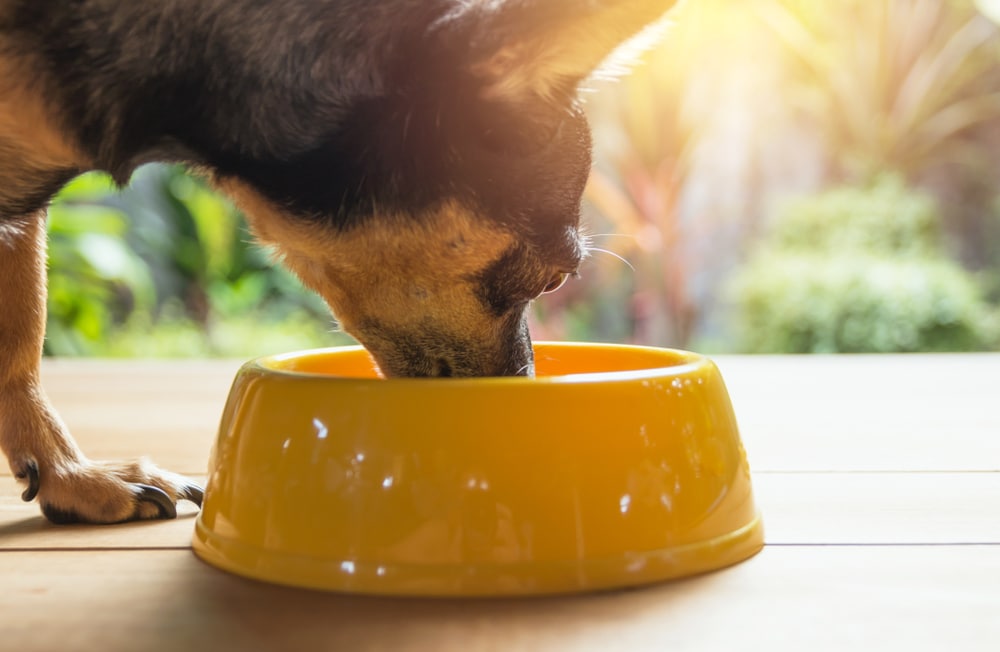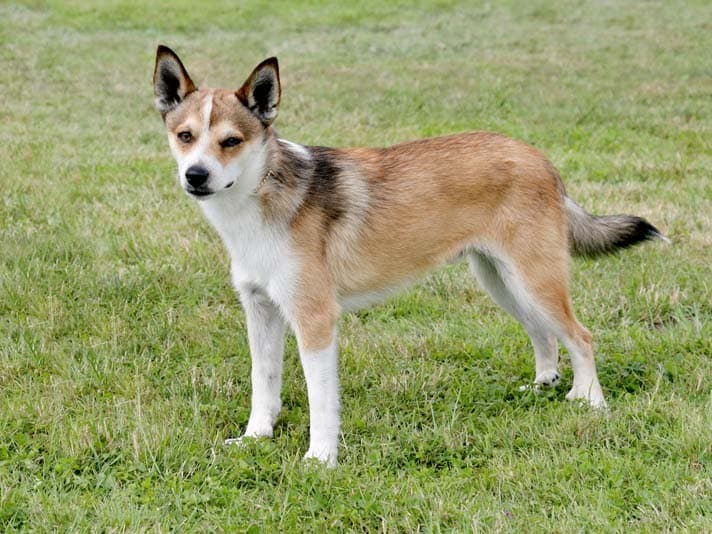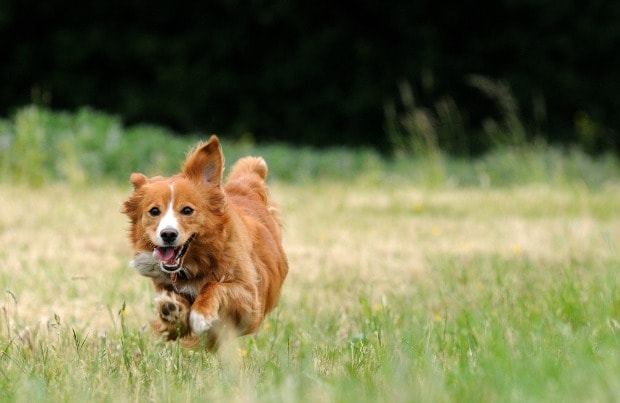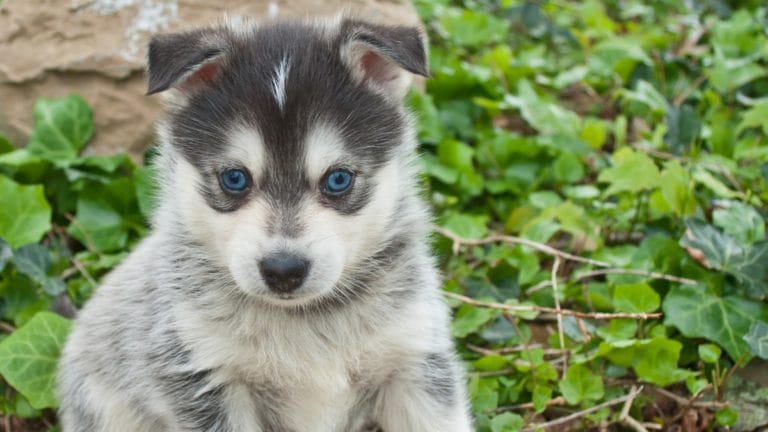The amount of energy Chihuahuas expend is amazing. While novice and experienced Chihuahua owners alike recognize that these sturdy, spry dogs are full of life, personality and seemingly boundless energy, perhaps no one realizes just how busy these little bees are. An active 5-pound Chihuahua burns almost three times the amount of calories per pound than a dog weighing 150 pounds, says Dan Carey, D.V.M., with Iams Research and Development division.
Chihuahuas, like all breeds, have certain nutritional needs to keep them healthy, happy and long-lived. Along with their small size come special dietary needs. Or, rather, they have special dietary needs because of their small size. Heres some advice for making sure your Chihuahua is fit, trim, well-fed and full of energy.
Plump Is Not OK
The key to a healthy Chihuahua is proper nutrition. While this fact isn’t surprising, its difficult for Chihuahua owners not to spoil these little dogs. And, the No. 1 way in which most dog owners spoil their pets is through food rewards — a little extra kibble here, a few more treats there and even some table scraps thrown in, too.
Chihuahuas are small, sturdy little dogs that think they’re much bigger than they really are. Many owners buy into this bravado and feed their pets much more than they require for a balanced, healthy diet, which leads to one of the biggest problems found in pet Chihuahuas: obesity.
“Owners don’t realize how little it takes to keep Chihuahuas going, and because owners don’t fully realize how tiny Chihuahuas really are, owners tend to overfeed these dogs, says Dr. Carey.
Well-meaning owners spoil and pamper their dogs with food, and it doesn’t take much to unbalance their diet. With larger dogs, this problem isn’t as detrimental, but one snack or table treat can easily wind up being one-third the daily food intake of a Chihuahua.
Table scraps should be avoided at all costs, says Sandra Whittle of Chesterfield, Virginia, Chihuahua Club of America past president. Chihuahuas are used to being spoiled and pampered, and owners have to be careful that they don’t spoil the dogs in the wrong ways.
Overfeeding a Chihuahua with scraps or a dog food can lead to problems in puppyhood that carry over into adulthood, such as abnormal bone development (bone weakening and bowing), obesity, skin problems and rickets.
Particularly, overfeeding a pup disrupts its normal fat composition by increasing the size of fat cells during growth, which in turn increases the chances of the pup becoming an obese adult dog.
According to Whittle, though, the overfeeding issue is taken right out of some owners hands. Some dogs seem to regulate their diets all by themselves. Some are indeed little piglets, she says, but my dogs will eat a piece of kibble here and there throughout the day. They never chow down, so to speak. However, Whittle recognizes that many owners aren’t endowed with such light eaters.
Part of the problem is that owners fail to recognize the signs of obesity or how much is too much. Many new Chihuahua owners tend to keep their dogs a little too fat, says Dr. Carey. Even an extra 6 ounces makes them fat. So what does a Chihuahua in good condition look like? According to Dr. Carey, its easy to determine whether your Chichis weight is over or under.
The dogs ribs should be barely visible, with a slight ripple over the ribs. You should be able to feel the dogs ribs without applying pressure, and the dog should have a little waist (the sides of the stomach cavity should cave in a bit) visible when the owner is standing over the dog looking down. From the side, there should be a visible tummy tuck that slopes upward from the chest cavity and toward the hindquarters. This is the look you want to maintain throughout the dogs life, Dr. Carey says.
What Constitutes a Good Diet?
The key to this ideal proportion is to maintain a lean body composition throughout the dogs life. Proper maintenance begins with a quality diet of foods that are nutrient dense.
If you feed your dog a food that is dense in calories and protein, they eat less of it, and its usually a higher quality food, says Dr. Carey. A less-dense food has fewer calories, and the dog has to eat twice as much to get the same amount of nutrition.
Also take into account the dogs life stage and activity level. Puppies require plenty of calories and protein for growth, adult dogs require a maintenance diet, and senior dogs need not only maintenance nutrient levels but also increased protein to retain muscle mass that can be lost as the dog ages. Senior foods also should include antioxidants, such as vitamin E and beta carotene, which help improve an older dogs immune system.
Sometimes I recommend that a very active Chihuahua continue to be fed puppy food, because the nutrient density is higher, says Dr. Carey. Active dogs should receive multiple feedings of nutrient-dense food. Food for couch potatoes should contain less fat.
Owners of older and inactive adult dogs should strive to maintain their dogs ideal weight, which will be more difficult to do as the dog ages and as body composition changes. At age 8, a Chihuahua is a senior from a metabolic standpoint, says Dr. Carey. It then becomes necessary for the dogs body to work to retain muscle tissue, which protein helps to do. The amount of protein a dog takes in is directly proportional to total body protein synthesis, or the amount of protein the body can make for the organs to use. At this age, he says, the changes will be subtle, but they’re happening. By age 12, 13 or 14 years, retaining muscle mass becomes especially important, when backbones and shoulder blades start to show and muscle tissue is increasingly diminished.
Protein Battle
Dr. Carey was involved in a research study conducted from 1988 to 1992, the results of which determined that protein did not cause liver or kidney damage or disease, nor was it responsible for renal failure. However, he’s not surprised that many breeders, enthusiasts and even some veterinarians still believe that protein is harmful because the results weren’t reported until 1994. It takes awhile for that type of information to trickle down, he says, and it takes even longer for people to change their opinions about something that was held as truth for so long.
Logically, breed enthusiasts might assume that protein contributes to renal failure or kidney disease, because senior dogs, which may have an increase of protein in their diet to maintain body condition, can develop kidney disease with the onset of aging. Again, Dr. Carey dispels those myths: Protein doesn’t cause kidney disease — age does. As a dog ages, organs begin to fail. Chihuahuas aren’t any more prone to renal or kidney disease than other dogs. Of course, once a dog develops kidney disease, protein intake must be regulated, but the protein doesn’t cause the disease.
Dr. Carey explains that a quality premium food that contains 30 to 33 percent protein is considered adequate.
Telltale Signs And Related Health Problems
What are some of the outward signs that can indicate something in your Chihuahuas diet is amiss? Besides obesity, skin that is oily, flakey or drycan mean trouble. The dogs coat should have a sheen. Coat and skin are the last things on a dog that receive the benefits of a good diet, he says, and therefore are good indicators that a dog isn’t receiving enough adequate nutrition. Dull eyes are another sign. Poor nutrition increases the Chihuahua’s susceptibility to skin problems, including demodex and ringworm.
Also, owners should observe their dogs stools. The dogs should produce small, firmly formed stools that are medium to dark brown in color, he explains. Owners should be able to pick them up in one piece with a paper towel. Diarrhea is an indicator, as are stools that are hard as rocks, that the diet is poor. Dowell says that poor nutrition can lead to heart problems, as well. Poor dental hygiene can also lead to heart disease. Hypoglycemia is also known in the breed. They play hard, they run hard, Whittle explains. They have a tendency to use up their fuel fast.
Individual Feeding Regimen
Feeding schedules depend on the individual dog and its activity level, age and needs.
Dowell typically feeds her Chihuahuas once a day in the evening.
For active dogs with fast metabolisms, I might feed them more than once a day, explains Lambert. However, some dogs I wouldn’t feed more than once during a day. Lambert says she typically offers 1⁄8 to 1⁄4 a cup of food daily to most of her dogs. She also watches her dogs to see if they are particularly stressed or if the summer weather is affecting them in some way, and adjusts their diets accordingly.
Whittle also adjusts her dogs food amounts according to their individual needs. She feeds her adult dogs 1 cup of food in the morning and observes how they do with that amount. She follows the same procedure with puppies. Its the best way I can tell how each individual dog eats, she says. Of course, all enthusiasts agree, don’t forget to supply cool, fresh water to your Chichis at all times.
What’s the best nutrition and feeding regimen for your Chichi? Only your dog will know, but you must make the final decision for your pet. Talk to your dogs veterinarian, read dog food labels carefully and be careful of what you buy. If a food isn’t working, switch it, following the advice of your dogs veterinarian. Don’t feed your pet table scraps, or too many treats for that matter. To keep your Chichi from becoming overweight, establish a regular exercise routine for your pet that includes walks and longer play times. With a premium food, plenty of water and exercise, premium food, and regular observation of weight and coat, you and your Chihuahua can’t go wrong.
Feeding Time Tips
- Set a relaxed feeding schedule so that your Chihuahua knows about when a meal is coming but does not become a pest as the clock strikes 5 pm. If feeding time is usually somewhere between 5 and 6 pm, your dog won’t panic when you’re late.
- Teach your dog to sit before you place the food bowl on the floor. If the dog is sitting, it won’t jump at the bowl, spilling food all over the floor.
- Allow 15 to 20 minutes for your dog to clean its dish, then pick up the bowl.
- Don’t free-feed if you are housetraining your dog; dogs that have constant access to food have constant activity in their digestive systems.
- Keep children away from your dog during feeding time; your pet should never feel it has to defend its food against toddlers or older children.
Posted By: Chewy Editorial
Featured Image: Via Krisana Antharith/Shutterstock
Share:









